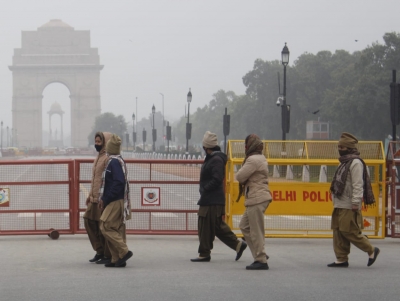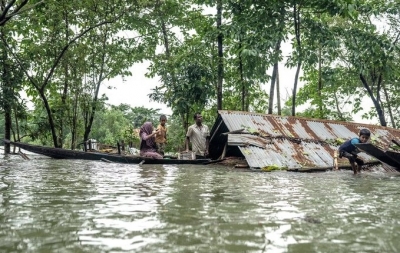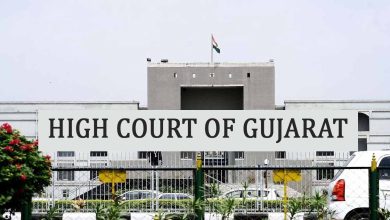Bye bye cold! Winters face existential risk as ‘Dilli ki Sardi’ chokes amid policy paralysis

New Delhi, Nov 4 : The famous ‘Dilli Ki Sardi’ (Delhi’s winter) phenomenon which, till about some years back, wooed both international and domestic tourists to come to the city in the October-February period, attend music, art and dance evenings, soak in early morning walks in the bylanes of old Delhi with mouth-watering brunches, enjoy weddings amid dense, yet mesmerising fog in the open.
But not any more.
The national capital and its nearby areas are now engulfed with deadly smog with killer pollutants as the winter settles in, with healthcare providers warning people to avoid early morning and late evening outings.
Hospitals are seeing a surge with people suffering from respiratory illnesses — year after year — and according to doctors, otherwise healthy people of all ages are now suffering hard times as air pollution kicks in with the start of the festive season.
What has actually gone wrong with ‘Dilli Ki Sardi’ as years after years, despite the policymakers throwing out various solutions to curb the air pollution menace in the last 7-8 years, the scare is only getting bigger, shortening an average Indian’s life expectancy by years?
According to health experts, air pollution, a complex amalgamation of particulate matter, gases, and biological compounds, stands as a silent assailant on human health, precipitating a multitude of medical afflictions.
Its origins, ranging from vehicular emissions to industrial activities, intricately weave a tapestry of causative factors.
However, the policy paralysis around this grave issue is clear. Despite spending crores on smog towers, initiating various stages of the Graded Response Action Plan (GRAP), encouraging public transport and working on to reduce stubble burning, air pollution returns every winter, only becoming more lethal.
The result is a serious situation for millions of people who have to now take care of their health by themselves, in whatever limited way they can, in the confines of their homes with air purifying gadgets.
Dr Nikhil Modi, Senior Consultant, Respiratory and Critical Care Medicine, Indraprastha Apollo Hospitals, told IANS that particulate matter, notably PM2.5 and PM10, infiltrates the respiratory system, invoking inflammation, oxidative stress, and compromised lung function.
“Gaseous pollutants like nitrogen dioxide (NO2), sulfur dioxide (SO2), and ozone (O3) trigger respiratory distress, exacerbate existing conditions, and contribute to cardiovascular complications. The ominous repercussions of prolonged exposure to air pollution are undeniable, necessitating a proactive approach towards prevention,” Dr Modi told IANS.
Initiatives such as stringent emission controls, promoting renewable energy sources, and implementing green spaces within urban landscapes stand as robust preventive measures.
“Equally crucial is the advocacy for individual actions: reducing vehicular reliance, fostering green transport alternatives, and endorsing indoor air quality improvements through adequate ventilation and air purifiers. Addressing the deleterious impact of air pollution requires a multifaceted medical approach,” he emphasised.
Treatment modalities pivot on mitigating symptoms and averting long-term health ramifications. Respiratory illnesses stemming from air pollution necessitate personalised medical interventions. Therapeutic strategies encompass bronchodilators, corticosteroids, and supplementary oxygen for managing exacerbated conditions.
“Furthermore, lifestyle adjustments like regular exercise, balanced nutrition, and respiratory rehabilitation programs play an integral role in bolstering the body’s resilience. Innovative medical research delves into novel treatments, including the development of antioxidant therapies to counteract oxidative stress induced by air pollutants, said Dr Modi.
According to experts, vaccines against specific respiratory infections exacerbated by air pollution are under exploration, seeking to fortify the immune system against these heightened risks.
Governments and industries can implement cleaner technologies and stricter emissions standards and further promote public transportation and electric vehicles to reduce traffic-related pollution.
However, how far can the citizens go on their own amid the lack of a long-term, full-proof strategy from policymakers so that they do not need to face such deadly time every winter?
Air pollution can shorten the lives of Delhi residents by around 11.9 years, according to the Air Quality Life Index (AQLI) report for 2023 by the University of Chicago’s Energy Policy Institute.
The study found that India’s over 140 crore population lives with an annual average particulate pollution level exceeding the 5 µg/m3 limit set by the World Health Organization (WHO).
Around 67.4 per cent of Indians live in areas that exceed the country’s national air quality standard of 40 µg/m3.
According to experts, the battle against air pollution’s adverse health effects demands a collaborative effort — melding medical expertise, environmental stewardship, and public policy.
“Rigorous research, stringent regulations, and community engagement are the keystones for a healthier, breathable future. A collective commitment to combat air pollution not only preserves human well-being but also safeguards the planet for generations to come,” Dr Modi stressed.






